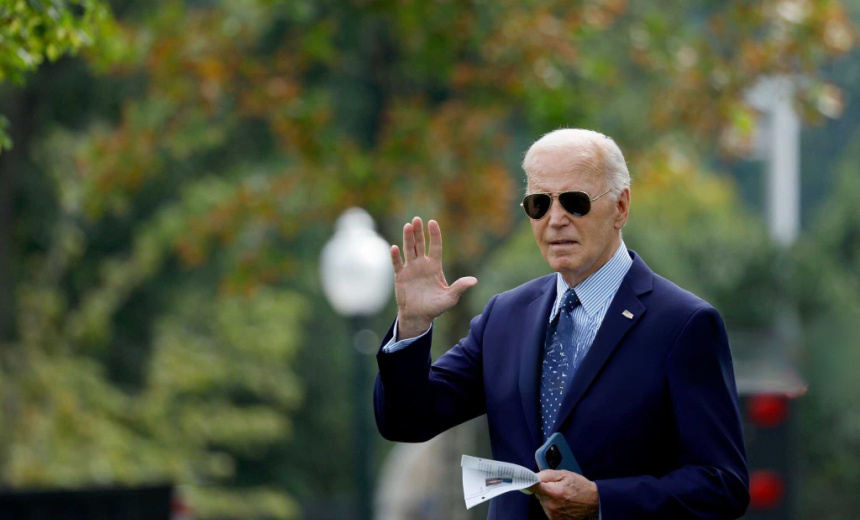Experts Warn Biden’s Cybersecurity and Tech Initiatives Face Instability Under Trump’s Leadership

A month before President Joe Biden assumed office, catastrophic breaches attributed to Russian state-sponsored hackers targeting SolarWinds put U.S. networks on high alert. This incident compromised numerous entities, including Fortune 500 companies, federal agencies, and healthcare institutions, all affected by the deployment of corrupt software updates.
In response, President Biden called for an exhaustive investigation and vowed to hold Russia accountable, leading to a series of sanctions and significant law enforcement actions. His early initiatives also included an executive order aimed at fortifying the nation’s cybersecurity posture.
Fast forward four years, and President Biden is poised to depart the White House amidst a litany of cyber threats, now predominantly linked to China, while a new executive order seeks to confront these emerging challenges. Biden’s cybersecurity legacy is now deeply intertwined with the future decisions of incoming President Donald Trump regarding which policies and initiatives to prioritize.
Biden’s strategic vision aimed to transfer cybersecurity responsibilities from end users to software developers, promoting enhanced information sharing between public and private sectors. He pushed for a government overhaul characterized by digital-first, cloud-first, and AI-led frameworks.
While there were notable advancements in addressing key cybersecurity issues during Biden’s administration, the outcomes lacked consistency; often, proposed improvements did not translate into actionable measures. Jordan Burris, general manager of public sector operations at Socure and former chief of staff to the U.S. CIO, remarked on this deficiency, indicating that many initiatives required structural support and bipartisan backing to ensure durability.
The implementation of methodologies such as zero trust architecture and critical infrastructure protection heavily relies on continuous funding and collaboration efforts, which may be at risk with a transition of power. Burris noted that late-stage executive orders often function more as symbolic gestures than as substantial measures for effective implementation.
As Biden crafted U.S. technology policy, significant shifts occurred overseas. The European Union enhanced its product liability regulations, mandating that software providers assume responsibility for vulnerabilities throughout the supply chain—including open-source components. In contrast, the Cybersecurity and Infrastructure Security Agency (CISA) made little progress on core transparency initiatives, such as the adoption of software bills of materials.
Experts are concerned that the incoming administration’s alignment with the technology industry may provoke considerable resistance to policies perceived as burdensome, potentially diluting initiatives related to security by design and zero trust principles.
As Biden aimed to update federal systems and elevate governmental efficiency, several analysts noted that his responses to pressing cyberattacks have been largely reactive. Current and former officials involved in the final cybersecurity order suggested that many measures should have been implemented significantly earlier in his presidency.
Rather than an aggressive counter-offensive approach, Biden’s administration primarily enforced sanctions in reaction to a wave of ransomware attacks directed at U.S. hospitals and financial entities. His last executive order on cybersecurity expanded sanctioning capabilities for those involved in ransomware activities and cyberattacks against U.S. critical infrastructure.
Looking ahead, experts anticipate that the cyber strategy of the future administration may sharply diverge from Biden’s approach, with concerns mounting over intensifying global threats. Security analysts warn that Trump’s potential return to office could embolden Russia to escalate cyber operations against pro-European nations, while Middle Eastern groups might amplify their cyberattacks on regional allies.
China has surged ahead of the U.S. in key technology research, raising alarms about shifting global dynamics. As the impending administration contemplates its cybersecurity doctrine, it remains uncertain whether it will build upon Biden’s frameworks or dismantle them, impacting the foundational strategies aimed at reinforcing the nation’s digital security protocols.
In assessing the tactics employed in these cyber incidents, there’s a need to reference the MITRE ATT&CK framework. Initial access methods such as spear phishing or exploitation of public-facing applications might have been instrumental in these breaches, coupled with advanced techniques for persistence and privilege escalation to maintain a foothold within compromised networks. As the cyber threat landscape continues to evolve, robust risk management strategies will be essential for organizations striving to safeguard their digital assets amidst uncertain political landscapes.
